Laura Knight in 5 Paintings: Capturing the Quotidian
An official war artist and the first woman to be made a dame of the British Empire, Laura Knight reached the top of her profession with her...
Natalia Iacobelli 2 January 2025
15 February 2024 min Read
Visual artist, singer-songwriter, writer, and filmmaker, Yoko Ono cannot be reduced to the role of the wife of the English musician John Lennon (1940-1980). From 15 February 2024, Tate Modern will present the UK’s largest exhibition celebrating the ground-breaking and influential work of artist and activist Yoko Ono
Born on February 18, 1933, Yoko Ono grew up in a wealthy Tokyo family. When she emigrated to her family in 1952 in New York, in the USA, the young woman studied philosophy, poetry, music, and composition. It was then, alongside her first husband, the composer Toshi Ichiyanagi (1933-2022), that she carved out a place for herself in the world of avant-garde music. Also close to the composer John Cage (1912-1992), she joined the Fluxus movement in the early 1960s.
The latter, created in 1961, designates a community of international artists with very diverse profiles. They are at the origin of artistic production based on chance, the ephemeral, or even imposture. Yoko Ono will thus produce performances and even realize her Fluxfilms from 1966. This series of short films is characterized by an extremely slow movement questioning the nature of the cinematographic medium and integrating itself into the anti-spectacular aesthetic of Fluxus.
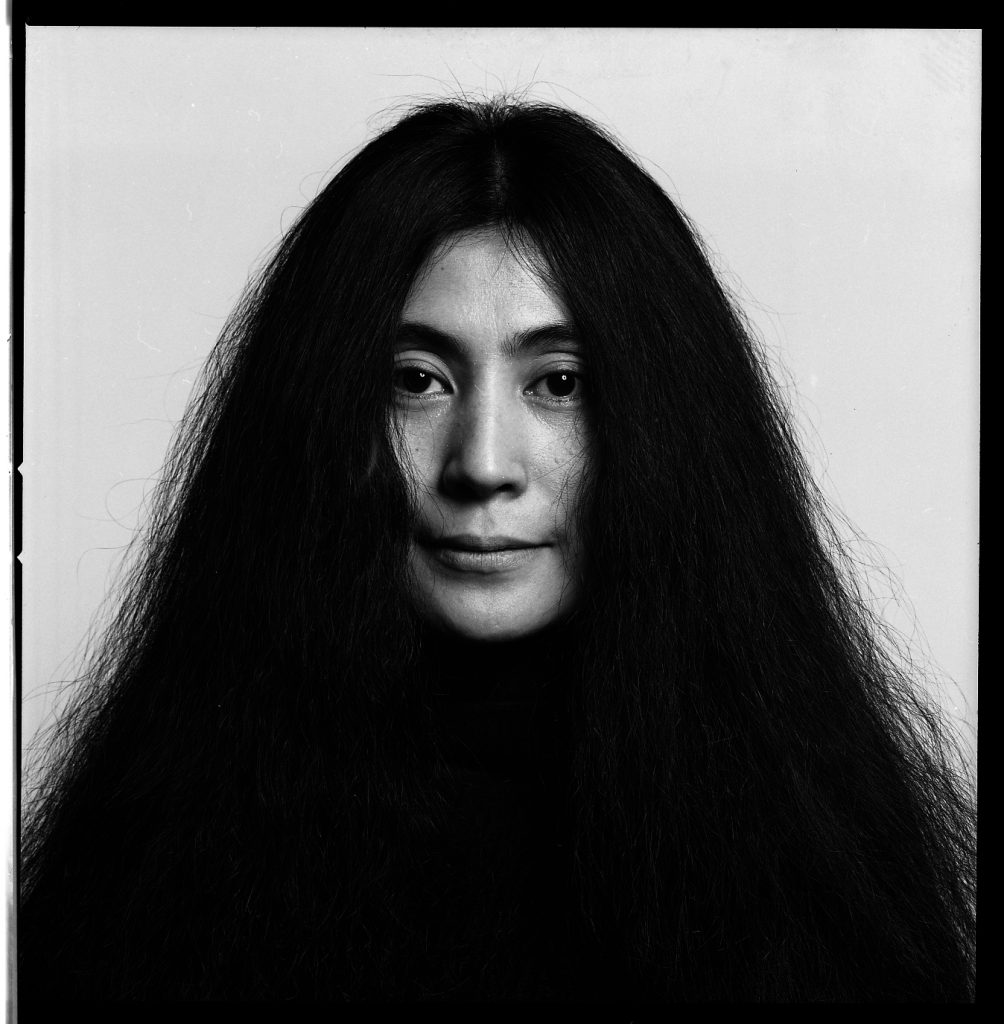
Iain Macmillan, Yoko Ono, 1969. FADmagazine.
The performance entitled Cut Piece, performed in 1964 in Kyoto (Japan) has become a milestone in art history. During this performance, the artist is kneeling motionless on stage, her eyes lowered. She thus becomes a symbol of vulnerability and passivity. Spectators are invited to cut out pieces of her clothes. In this performance, the spectator becomes an actor. However, far from being erotic, the undressing appears here as an assault, showing that “anonymous gaze can damage the subject looked at, going so far as to destroy it” (Helena Reckitt, Art and Feminism, 2001). Through this performance, Yoko Ono tends to demonstrate that by becoming a sort of sexual object, she becomes a victim of the social domination of men over women.
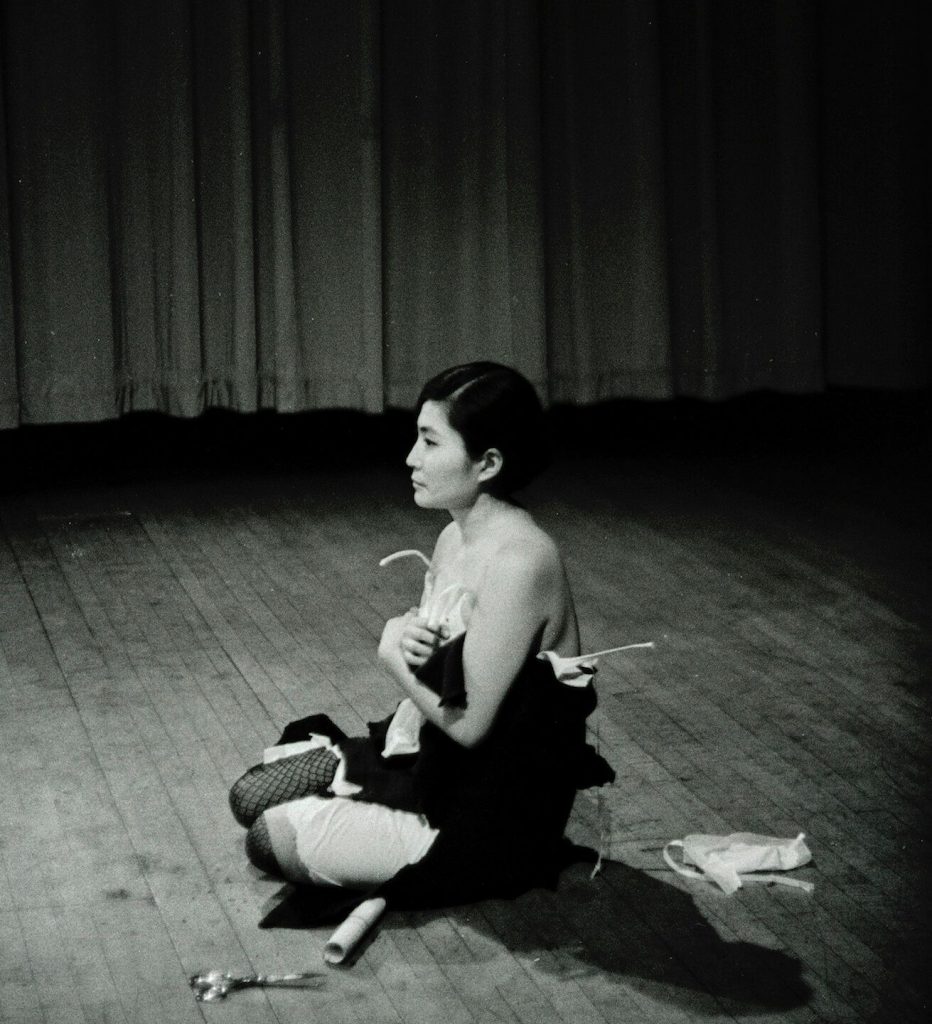
Yoko Ono, Cut Piece, 1964. Artist’s Twitter.
In 1966, Yoko Ono met a certain John Lennon, a member of the Beatles. The two artists met on the occasion of the exhibition Unfinished Paintings and Objects then organized in London. Becoming lovers and inspiring each other, these two composed several titles with four hands. Their first collaboration, called Acorn Event (1968), was a happening intended to represent the union of East and West. The sculpture, consisting of two oak acorns, one facing East, and the other West, is a symbol of peace between the two hemispheres, and at the same time, underlines the need for ecological awareness.
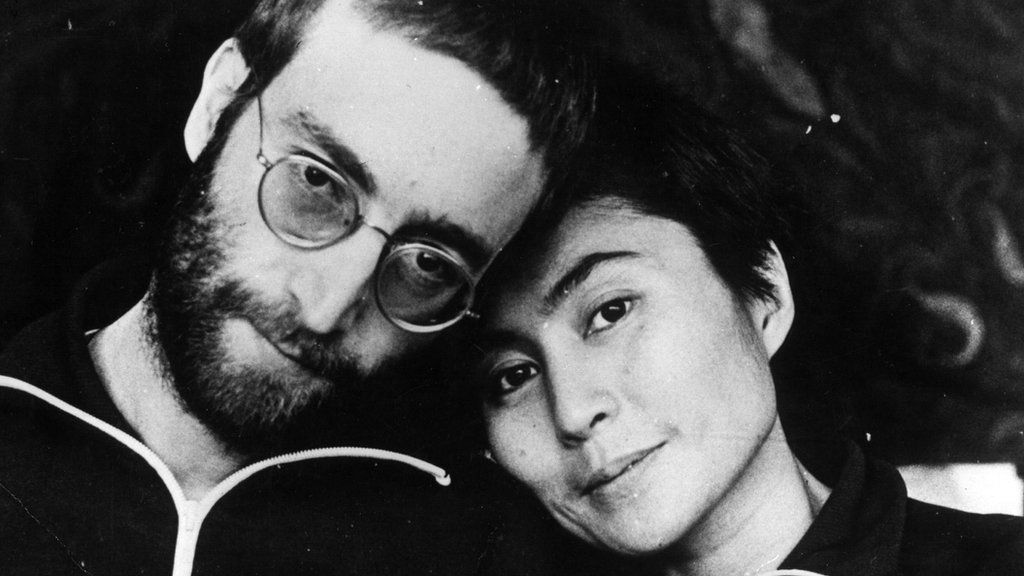
Antony Cox, Portrait of John Lennon and Yoko Ono, 1970. BBC.
Perhaps you have already seen the famous cover of the album Unfinished Music N°1: Two Virgins, released in 1968. The couple, who deliberately pose naked, are then part of the contemporary sexual revolution as well as the hippie movement and the avant-gardes of the 1960s. All of their joint artistic production aims to be at the service of peace.
The Amsterdam and Montreal Bed-Ins for Peace, in particular, are two cultural and media events held by the two artists during their honeymoon in 1969. As the Vietnam War raged, the famous couple highlight their protest and campaign for peace. Then, at the end of that same year 1969, Yoko Ono and John Lennon launched an international peace advertising campaign in 12 cities around the world, War Is Over (If You Want It). Happy Christmas from John and Yoko.
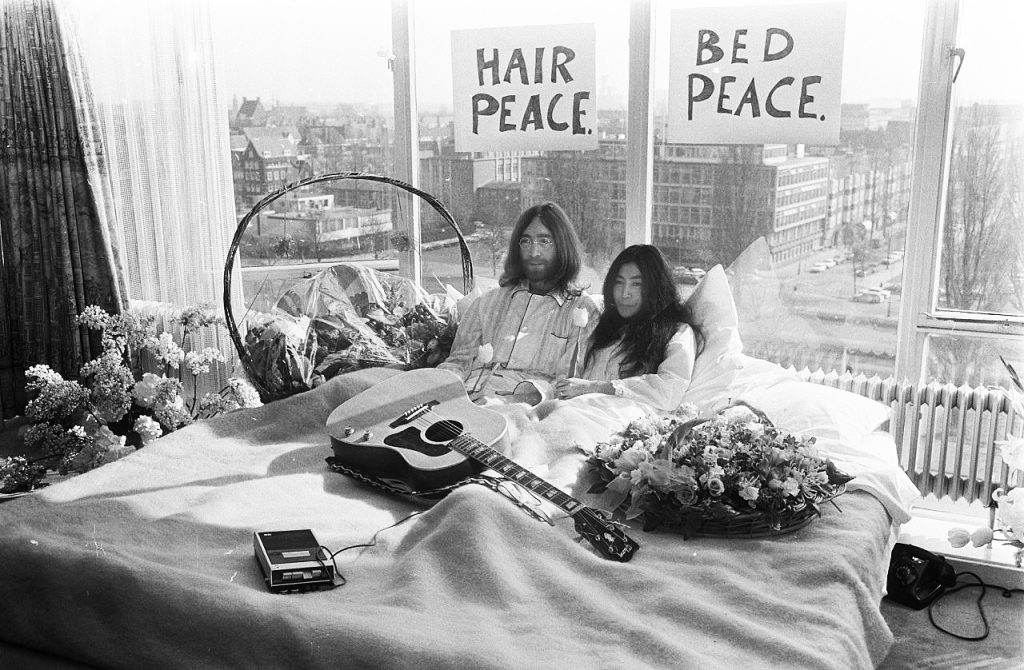
Yoko Ono and John Lennon, Bed-In for Peace, 1969, Amsterdam, Netherlands. Artsper Magazine.
The assassination of John Lennon, which takes place under the eyes of Yoko Ono on December 8, 1980, in New York, interrupts the collaboration of the two artists. However, the artistic production of Yoko Ono does not stop there. Always committed to peace and at the origin of a rich discography, her art is the subject of several museum exhibitions, like the retrospective Yes Yoko Ono in Japan and North America, in 2000. Nine years later, she received the Golden Lion of Venice for Lifetime Achievement at the Venice Biennale 2009.
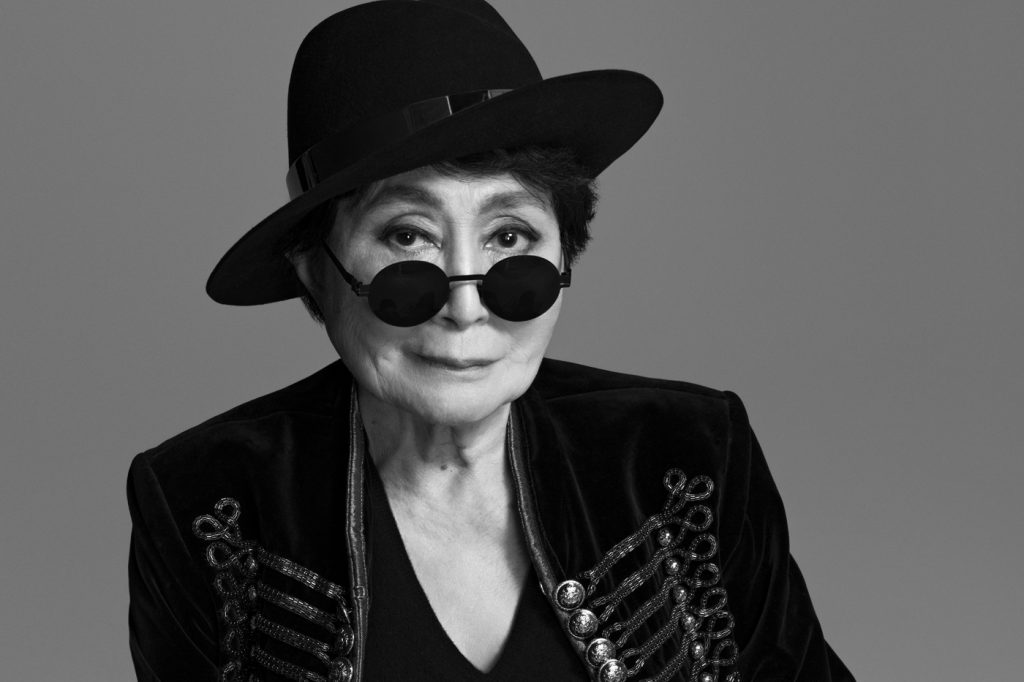
Matthew Placek, Portrait of Yoko Ono. Fondation Phi pour l’art contemporain.
In March 2022, she initiated a series of advertising campaigns bearing the message IMAGINE PEACE on the biggest advertising screens around the world, inviting the latter to unite rather than fight. Thus, until today, while the Russia-Ukraine war still demonstrates all its violence, Yoko Ono remains resolutely an artist in the service of peace.
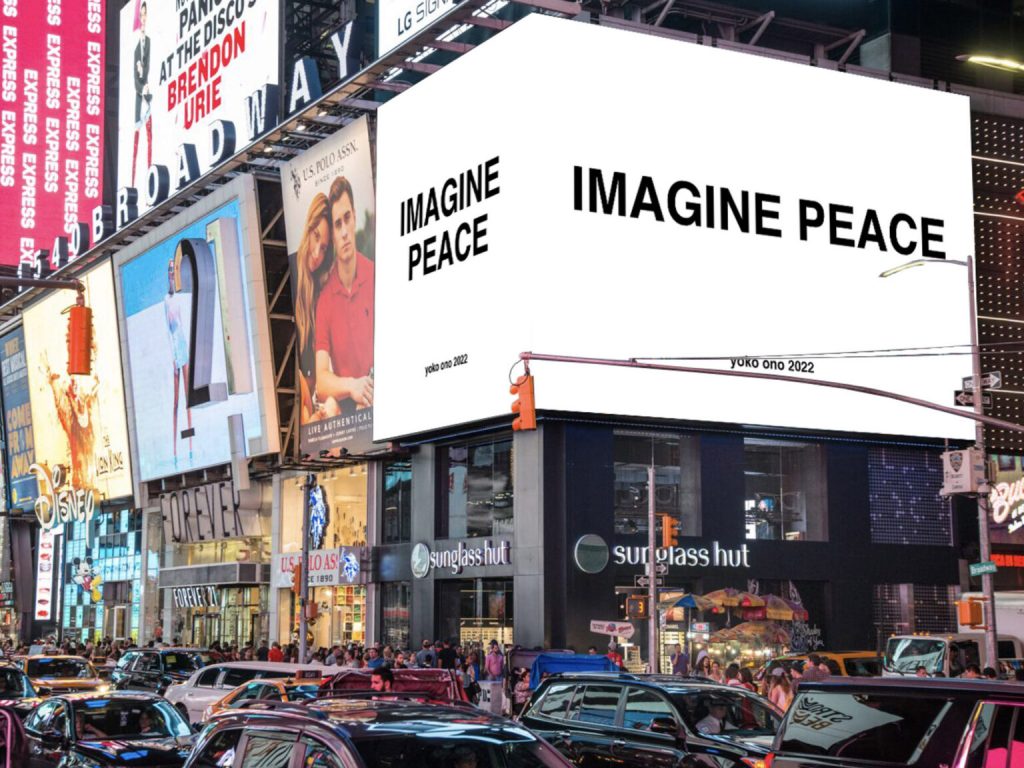
Yoko Ono, IMAGINE PEACE Campaign, 2022, New York, NY, USA. Official website of the artist.
DailyArt Magazine needs your support. Every contribution, however big or small, is very valuable for our future. Thanks to it, we will be able to sustain and grow the Magazine. Thank you for your help!